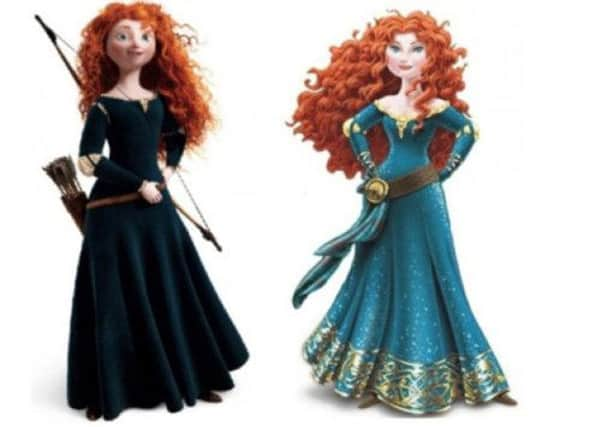Fiona McCade: Don’t blame Disney for idealistic images


Apart from hair colour, I suppose they all look much the same. There is a very specific template that Disney faithfully follows every time it creates a new princess (even when it tries so very hard to vary the ethnicity). All proper Disney princesses must have an adorable, heart-shaped face; huge eyes; no discernible nose; a wasp-waist; and tonnes and tonnes of hair. Oh, and their clothes have to sparkle. So, how would you like to be a beautiful, willowy, blonde princess? Hands up who would like to be Princess Hillary Clinton?
OK, I admit, Hillary isn’t in the official Disney line up, but British cartoonist David Trumble has included the former US secretary of state in a new satirical pantheon of real-life role-model “princesses” he’s drawn up in imitation of the traditional Disney mould.
Advertisement
Hide AdAdvertisement
Hide AdAlongside the blue-eyed, glitteringly gorgeous Hillary – dubbed “Princess 2016” – there are the likes of Rosa (Parks, the “Equality Princess”), Marie (Curie, the “Nobel Princess”), Malala (Yousafzai, the “Defiant Princess”) and Anne (Frank, called the “Holocaust Princess” before the resulting outcry saw her changed to the “Diary Princess”).
Trumble’s alternative princesses are cleverly modelled on the real Disney princesses. For example, Anne is obviously a cute-as-a-button, brunette Alice in Wonderland and Marie is essentially Belle from Beauty and the Beast. Everybody is pretty, skinny and sparkly, and nobody shows any sign of radium poisoning whatsoever.
These new princesses were conceived as a riposte to Disney’s decision, earlier this year, to give Merida, the battling Scots lass in Brave, a glamorous princess-makeover. New, “sexy” Merida appalled people around the globe, but although I think Trumble’s work is hugely thought-provoking, I wonder if he’s found the right target.
Yes, Disney deserved to be rapped for taming the unashamedly wild and free Merida and turning her into yet another simpering sweetie. However, it was mucking about with its own, fictional creation, and not trying to give any real person its signature saccharine treatment.
These alternative princesses are a fair comment on the narrow, one-style-fits-all Disney studio concept of beauty, but the princessification of women is a problem that transcends mere Hollywood cartoons. Every single day, in all forms of media, human females are moulded and mutated into an equally unreal standard of perfection. Their eyes are widened, their waists whittled, they disappear into fantasy figures that can’t possibly exist, yet we are fed the illusion that they do.
At least we can look at a Disney cartoon and dismiss it as simply the way things are done in the Magic Kingdom. But it’s much more difficult to persuade impressionable young women that what they’re seeing in glossy magazines is just as fictional as animation.
You may have watched the amazing (and now viral) Body Evolution video in which an ordinary woman is princessified – into a creature Disney would be proud of – in one minute. The video was created to show how easy it is to convince people that a wholly distorted representation of a human body is actually within the realms of reality, and it calls for all forms of image enhancement to be declared wherever they are used. That moment can’t come too soon for everybody’s sanity.
So while Disney’s perfect princesses are a legitimate target for anybody wanting to advocate and promote more realistic representations of womanhood, I think there are bigger fish to fry first.
Advertisement
Hide AdAdvertisement
Hide AdAnd if we’re going to embrace authenticity and reject these unattainable ideals in favour of accepting who we really are, it might also help to examine how some of those real-life role-models have coped.
For instance, I’ve seen photos of a young, über-feminist lawyer from Chicago called Hillary Rodham. She was kooky and passionate, had loads of bushy, brown hair, wore massive, round glasses and not much make-up. Fast forward 30 years and that same woman is now a sleek blonde, painstakingly princessified to within an inch of her existence. And maybe Princess Hillary was right to create and conform to that new image; maybe it was the only way to get ahead. But one thing’s for sure – Walt Disney had nothing to do with it.